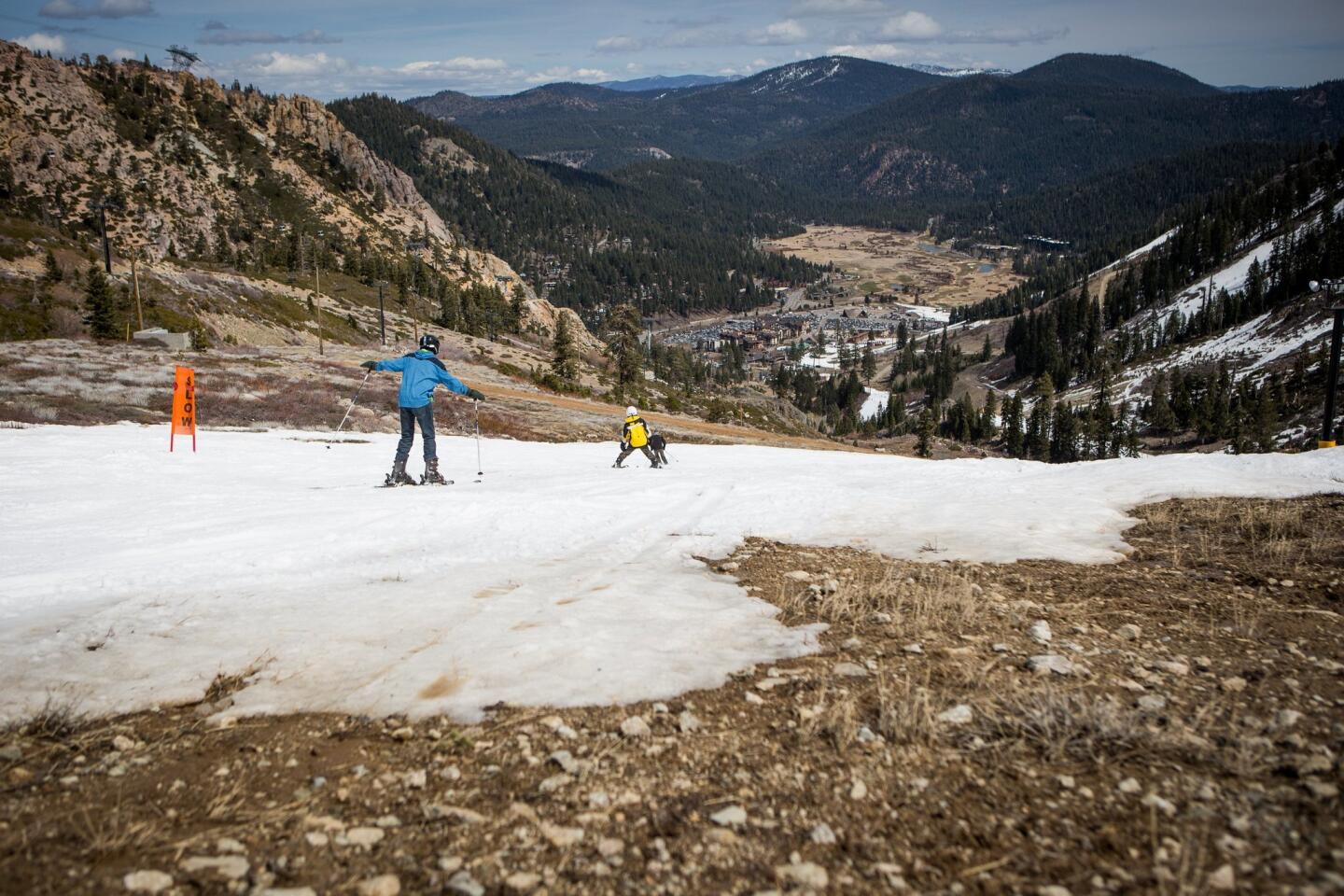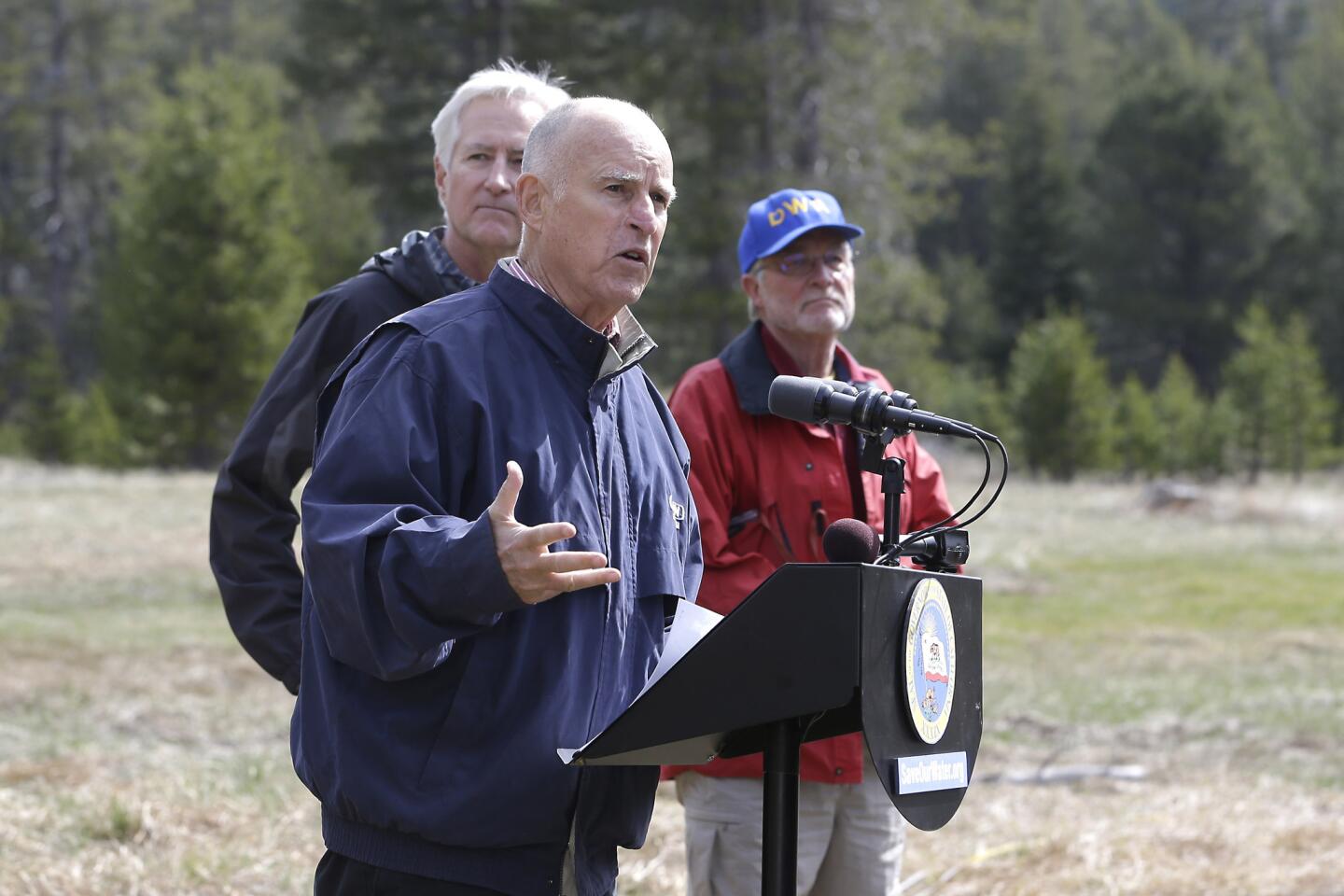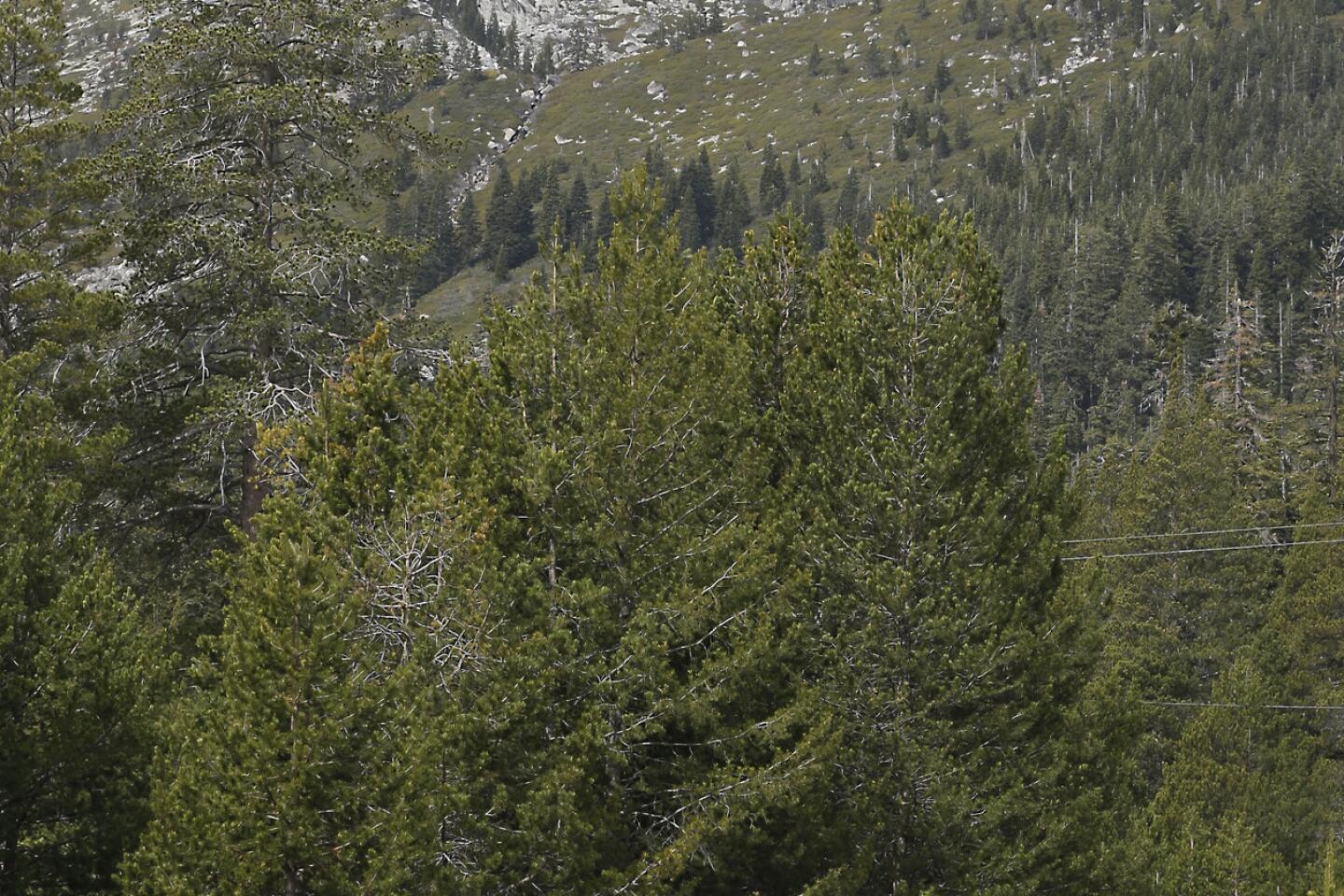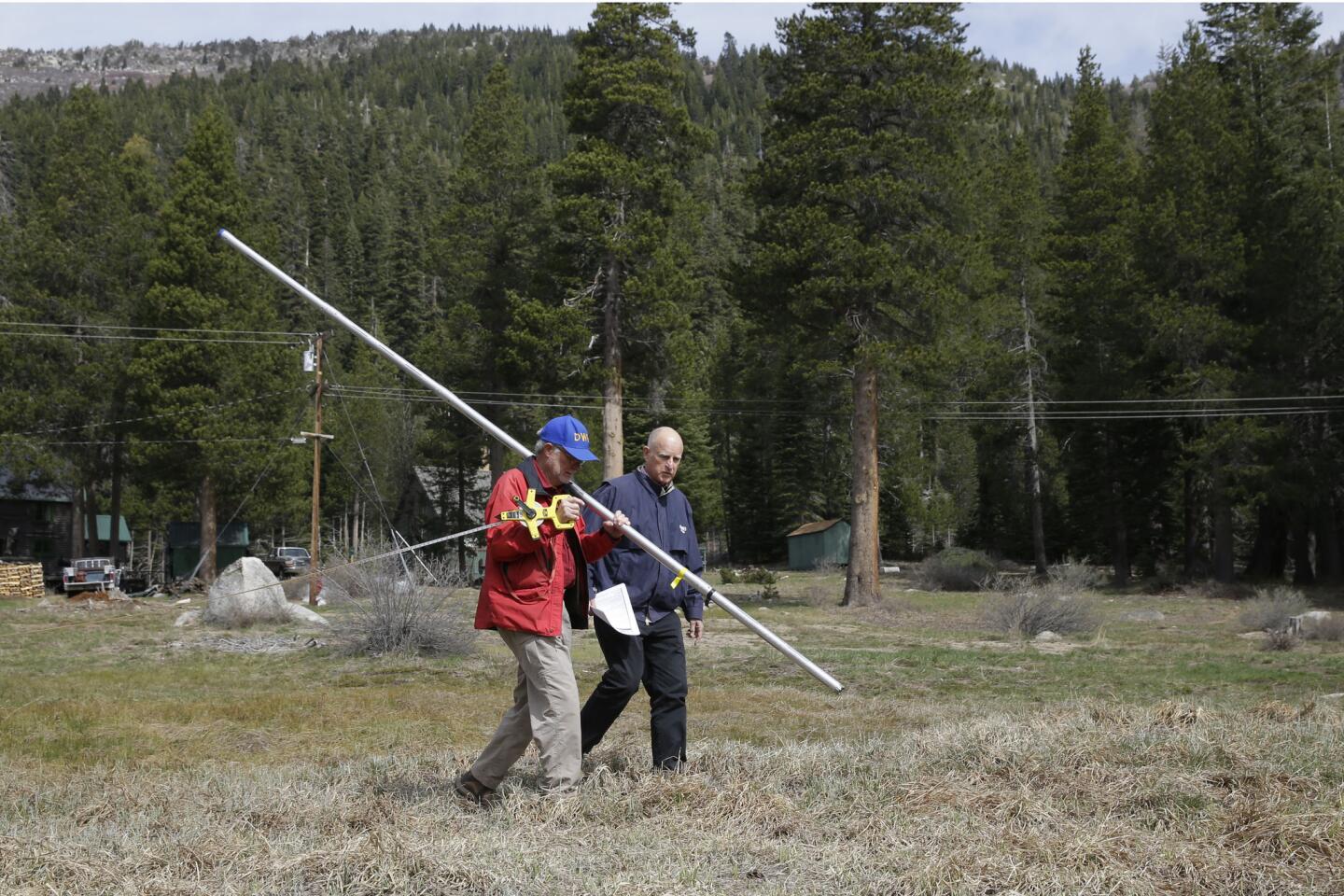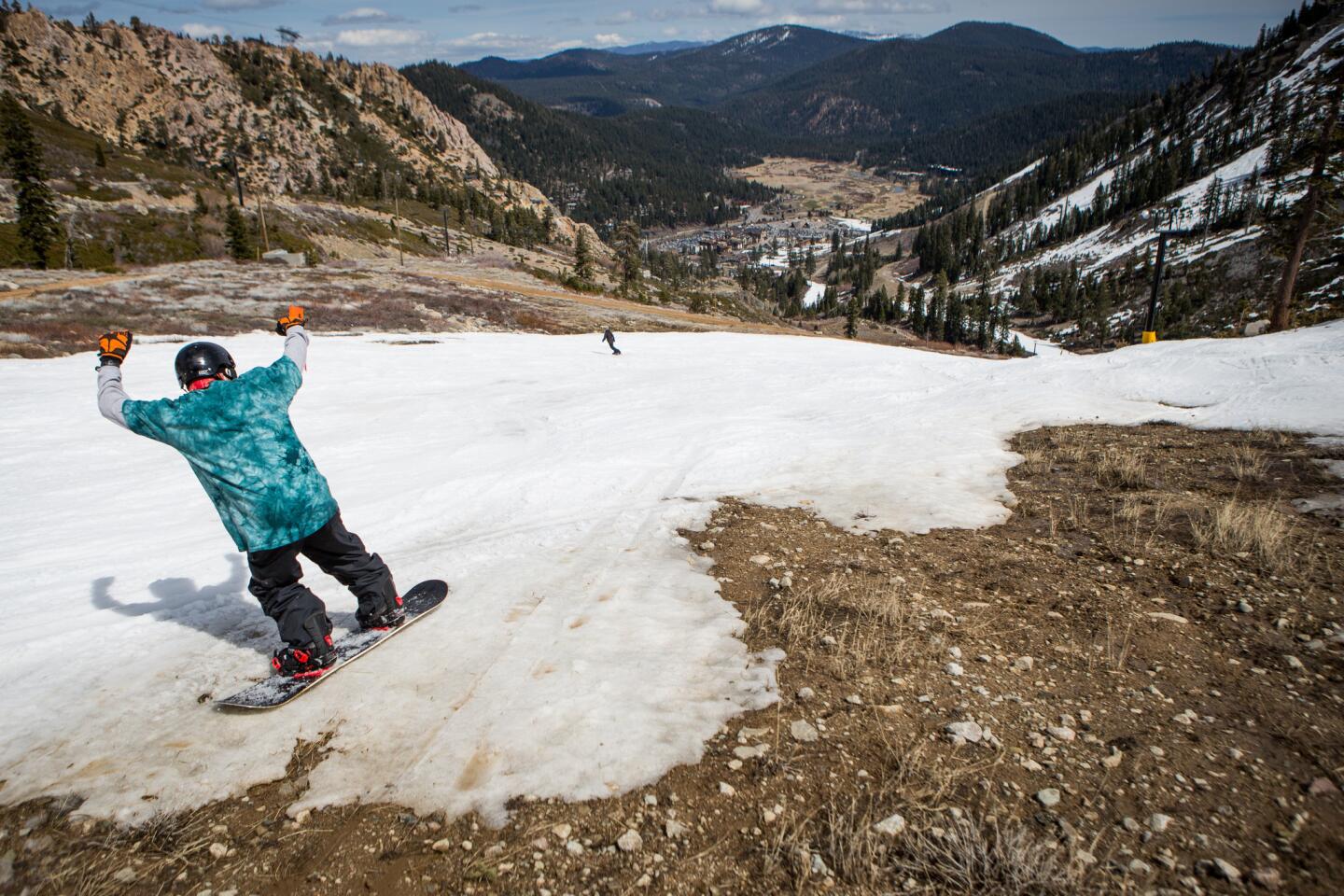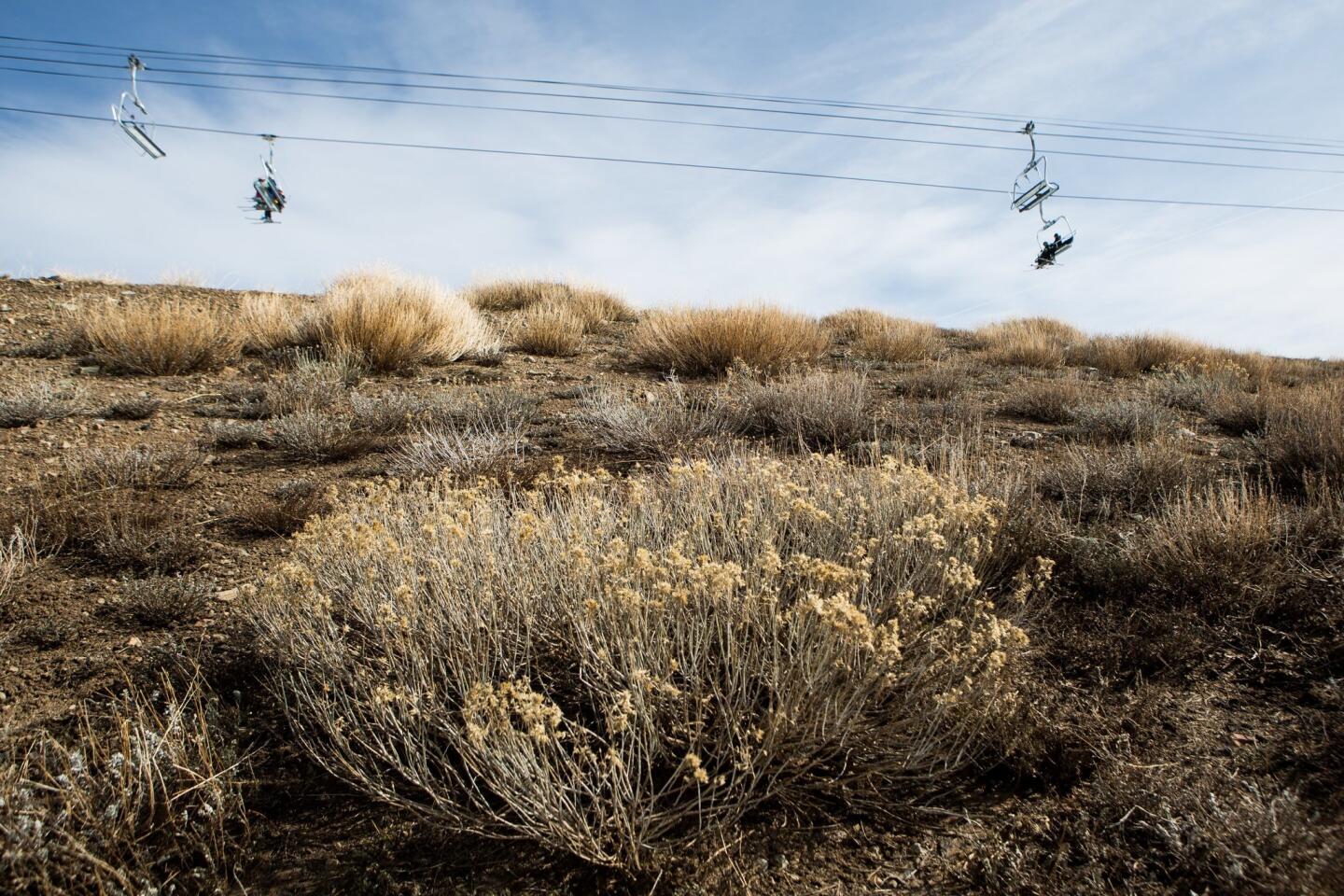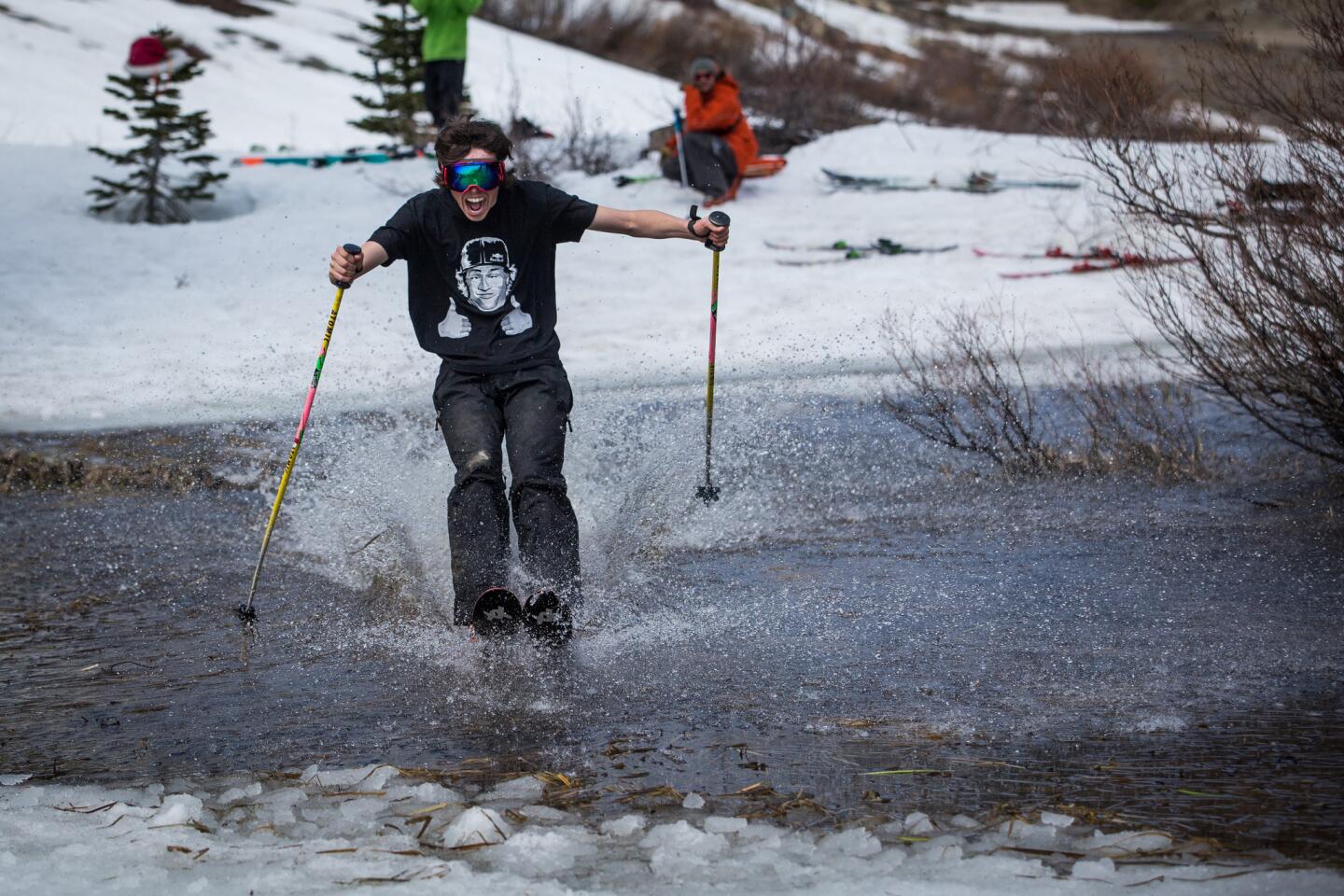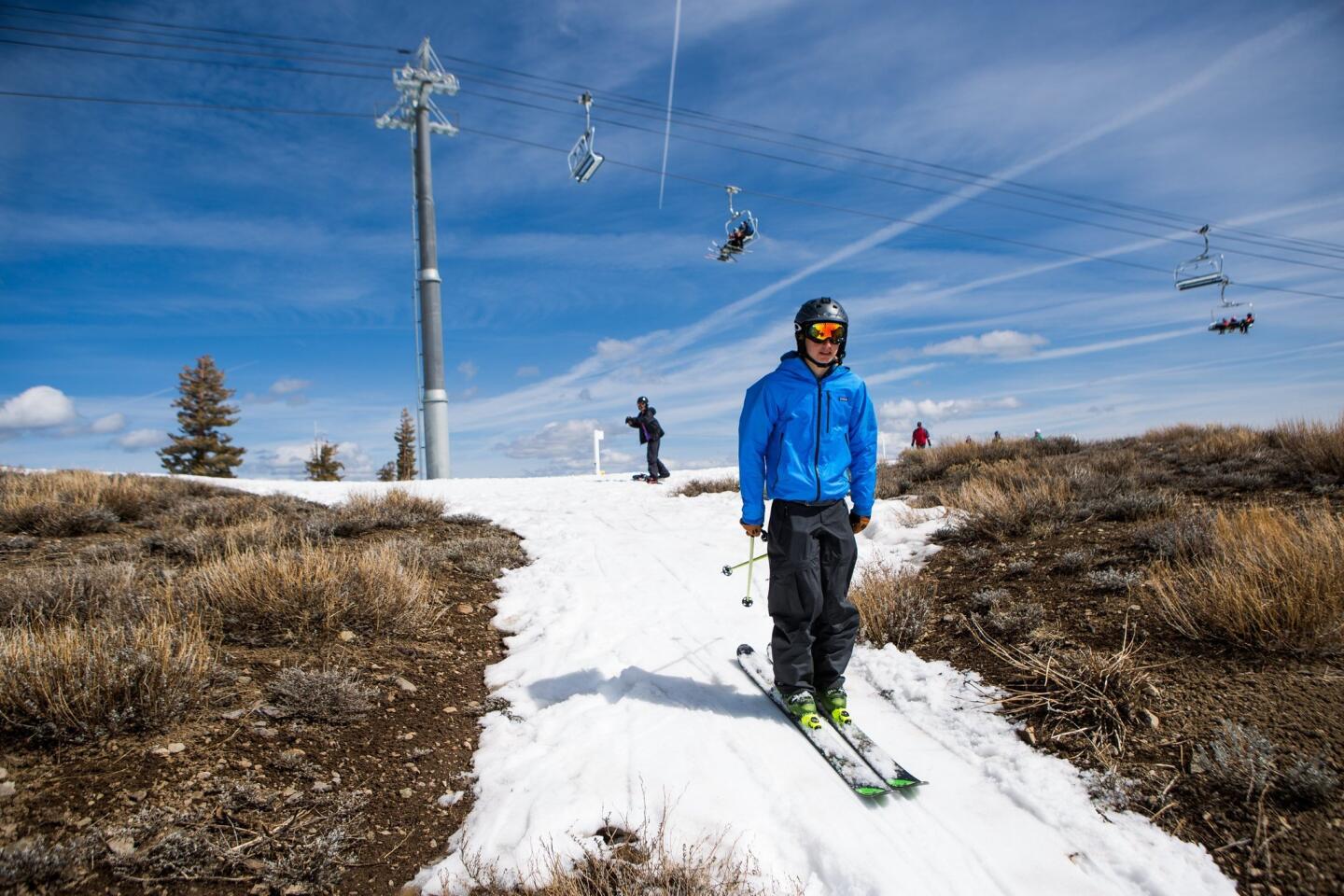California drought: Photos show skiers on more dirt than snow at Squaw Valley
- Share via
A series of photographs taken at ski resorts in Northern California show just how grim winter has been.
Skiers were photographed taking off on patches of snow surrounded by dirt and rock at Squaw Valley, which was forced to cancel a world cup snowboarding event in February because there was little snow.
The Sugar Bowl Resort, near the Donner Pass, announced that last Sunday was its final day of operations due to deteriorating conditions.
It’s one of 10 resorts forced to close early because of dismal snow conditions.
And so it’s been for the past four winters as the state’s deepening drought continues its grip.
“This is arguably one of the driest winters we have had,” said Bob Roberts, president and chief executive of the California Ski Industry Assn.
Snow pack levels across California are at record or near-record lows with precipitation levels 10 inches or more below normal in the Sierra Nevada, according to the U.S. Drought Report.
Normal snow pack years usually supply 30% of California’s water requirements.
“Unless this month approximates the 1991 ‘Miracle March,’ with significantly more precipitation than normal, the traditional wet season will end on April 1 with an alarmingly low amount of water stored in the mountains as snow,” the department said.
Last Tuesday, the state Water Board tightened its watering restrictions, and on Thursday, Gov. Jerry Brown proposed a $1-billion drought relief plan.
The lack of snow has not only affected state water supplies, but it has also taken a heavy toll on the ski businesses.
During the 2010-11 winter ski season, the resorts in California averaged about 7.4 million visitors, Roberts said. That changed four years ago when the drought kicked in.
Businesses declined by 30%, averaging 5.2 million to 5.3 million visitors per year.
“It’s taken a toll , but it’s not Armageddon,” Roberts said. “We have seen this coming.”
More than a decade ago, ski resorts noticed a shift in the weather: spring was warmer and winter was coming later.
Fearing the effects of warmer conditions, he said business owners began reducing their carbon footprint and installing more snow-making machines.
Ski resort owners, he said, also shifted their business model because they realized they couldn’t rely on the weather to sustain their business. Now, ski resorts offer year-round activities with some businesses catering to extreme sport athletes, he said.
“Weather is becoming less of a factor,” Roberts said.
For breaking news in California, follow @VeronicaRochaLA
More to Read
Sign up for Essential California
The most important California stories and recommendations in your inbox every morning.
You may occasionally receive promotional content from the Los Angeles Times.
